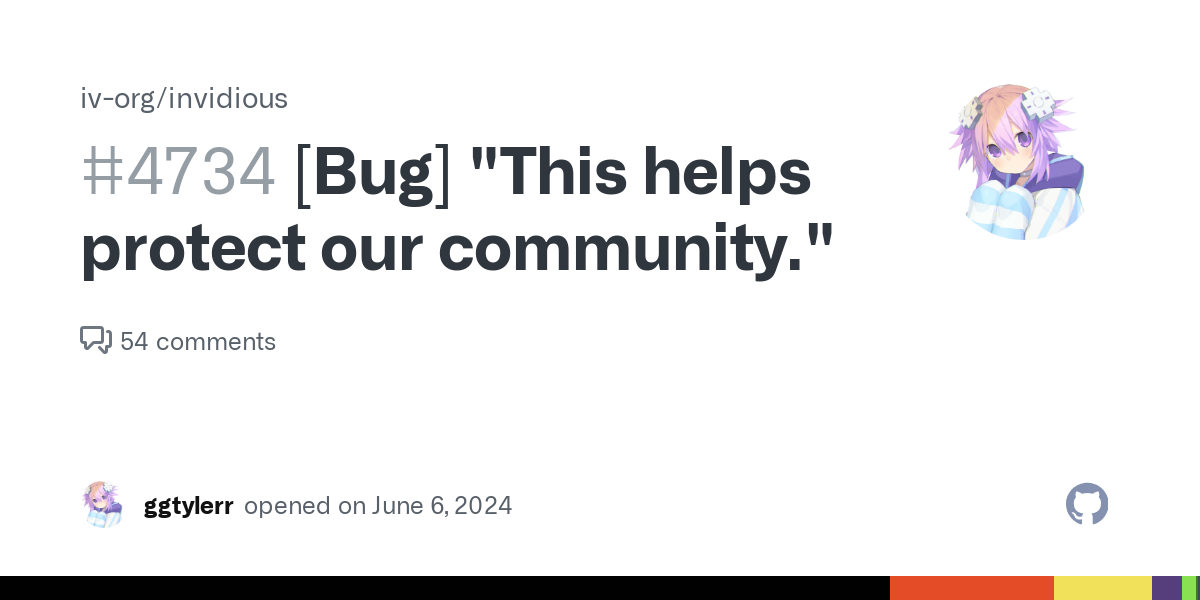cross-posted from: https://discuss.tchncs.de/post/22423685
EDIT: For those who are too lazy to click the link, this is what it says
Hello,
Sad news for everyone. YouTube/Google has patched the latest workaround that we had in order to restore the video playback functionality.
Right now we have no other solutions/fixes. You may be able to get Invidious working on residential IP addresses (like at home) but on datacenter IP addresses Invidious won’t work anymore.
If you are interested to install Invidious at home, we remind you that we have a guide for that here: https://docs.invidious.io/installation/..
This is not the death of this project. We will still try to find new solutions, but this might take time, months probably.
I have updated the public instance list in order to reflect on the working public instances: https://instances.invidious.io. Please don’t abuse them since the number is really low.



Plus, some ISPs might frown upon the increase in traffic when hosting a public service.
I hate my ISP.
this shit is so stupid, i pay for the fucking bandwidth, give me the fucking bandwidth.
Exactly. I hate being punished for using what was advertised to me.
yeah, if you want to charge me on a per packet basis, fucking charge me on a per packet basis.
don’t play this bullshit of “unlimited bandwidth” but actually it’s 1gbs so it’s not unlimited but actually very specifically limited to one specific amount, and nothing more, because it’s physically impossible for it to be higher.
Most residential ISPs would frown upon a large amount of upload traffic for a public service, and request that you switch to a business plan with a much lower contention ratio. Contention ratio is essentially the number of people the bandwidth is shared with. For example, if you have a 1Gbps connection with a contention ratio of 50:1 (common for residential ISPs), 50 people share the same 1Gbps bandwidth. That’s designed with the idea that not every user is using all their bandwidth at the exact same time. Constant uploads all day (like with a public proxy) breaks that assumption. Business plans usually have a contention ratio of 10:1 to 20:1.
The CEO of my ISP (Sonic) explicitly mentioned that they don’t like people hosting servers on their forum:
They don’t block it though, and they’re fine with low-bandwidth things like Home Assistant, VPNs, etc.
genuine question, do ISPs and networking infra people actually use the “global world” as a bandwidth heuristic consideration? Like i can see it being a potential problem, but i feel like the answer is fucking obvious here.